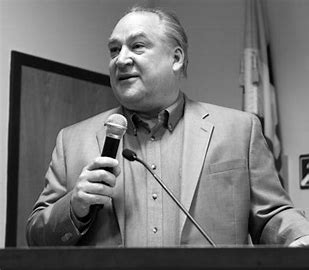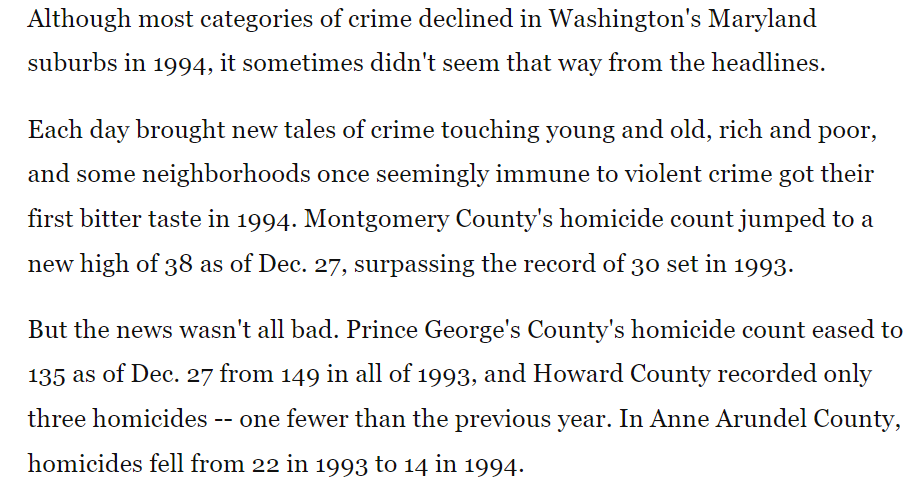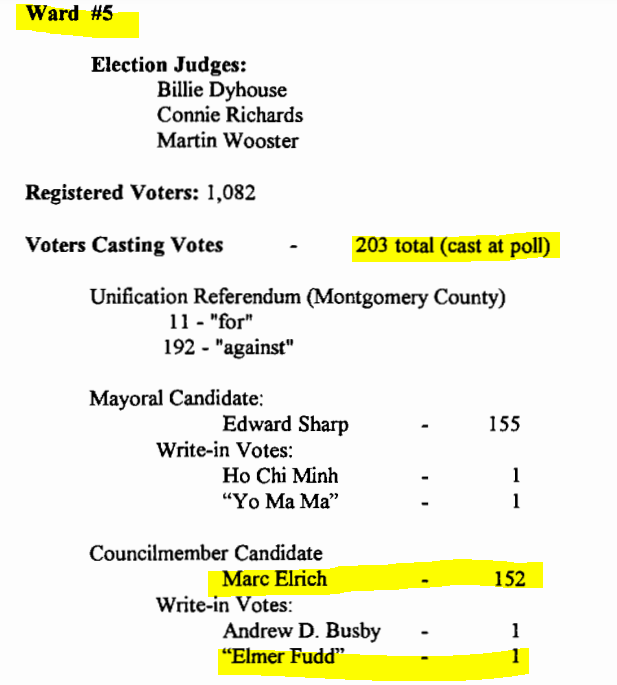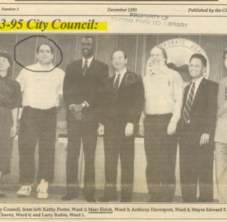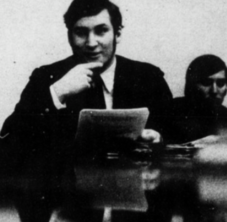In Part 1 of this series, we went through some past Takoma Park City Council meeting notes and discovered that current Montgomery County, Maryland Executive Marc Elrich has always had a general distaste for how people and “developers” (aka entrepreneurs or homeowners seeking better and more profitable use of scarce land) use their private property. Almost always couched in the faulty neo-Marxist “win-lose” mental model of “one person’s gain must be another’s loss”, Elrich has used local government to fight or delay against private property changes or housing additions he deems unworthy or ‘harmful to the greater community’ for decades.
Even on the NECAPs (never ever change any properties) Takoma Park City Council of the late 1980s and early 90s, his votes stand out. One of his first votes on the Takoma Park City Council was to be the sole “abstain” on approving a landowner who wished to sub-divide their own lot so that a new home could be built.
During his free time in the 1990s, in-between ‘teaching’ the youth of Montgomery County and being a part-time City Councilmember, Elrich attended many Silver Spring and Rockville-area planning board meetings and was generally a protester to economic progress and a voice of “no” to anything that would change Montgomery County or add productive capacity, new roads and new homes.
Per Louis Peck in his write-up on Elrich for Bethesda Magazine in 2013:“his longtime status as an outspoken skeptic of new development in Montgomery County—ranging from the Intercounty Connector to early reconstruction plans for downtown Silver Spring; and his frequent demands that developers pony up additional taxes and fees to underwrite public infrastructure.”
This kind of ideology, a combination of reflexive opposition to any change proposed by private property owners but also a sharp tendency towards a centralized ‘command and control’ economics, is now pervasive in Montgomery County government under CE Elrich. It has led to a broader stagnation in new home permitting and a general economic decline in the county. But how did the small city of Takoma Park even become part of Montgomery County, and unleash those who wield the influence CM Elrich has today, on all of us?
Takoma Park Unification / Secession
When Marc Elrich first started on the Takoma Park City Council in 1988, the small “city” (population 12,000) was an incorporated area that straddled two counties – Prince George’s and Montgomery. This meant a lot of duplication and confusion and that city government had to work within the confines of two different County codes. Over seventeen years, residents organized to unify the city under a single county and finally cleared Annapolis legal hurdles in 1994 – and the intransigence of one State Senator Mike V. Miller (himself in office 30+ years).
But this was also a proposal for peaceful secession of residents and homes away from Prince George’s County via referendum, which is interesting in light of Western MD counties recently wanting to exercise the same right of self determination to join West Virginia.
The referendum on “unification” also was a vote for secession, as the 5,937 residents on the Prince George’s County side of Takoma Park now prepare to take their $102.5 million tax base and defect to Montgomery. [Montgomery, David of The Washington Post, article dated Nov 8 1995]
Quoted in this same article is Elrich, clearly pro-secession, as long as it meant residents and homes and geography seceding from Prince George’s County and into Montgomery and not the other way around.
“Marc Elrich, a Takoma Park City Council member and a schoolteacher in Montgomery, still can’t see why anyone would be pining for Prince George’s. “I would have died if people in Montgomery County had voted to move to Prince George’s,” Elrich said. “There is a perceived difference that Montgomery County has better schools, better services and higher property values.”
This was a harsh and over-the-top statement denigrating then-County Exec Paris Glendening’s Prince George’s County, but many Takoma Park residents felt Prince George’s County was indeed less safe and higher-taxed – and that the school system was less accountable. Statistics bore this out [excerpted from ‘The Year in Crime’, Mooar, Brian and Jon Jeter for The Washington Post, December 1994]:
What is interesting is that a younger Elrich seemed to recognize that citizen safety, security, and a focus on better government services to the people of his city and indeed his county, mattered. An older Elrich dabbles in odd ball comments about police “uniform colors” and gets into petty squabbles with Maryland governors over flags. Montgomery County Public Schools were once the crown jewel of Maryland’s public school system. While still somewhat competitive nationally, the school system is widely acknowledged to be behind Howard County, MD public schools and other regional peers — and itself acknowledges a growing drug problem in its high schools.
As we wrap up this part two feature, a fun (and sad) factoid from the landmark “Election of 1995” that brought Takoma Park City fully into Montgomery County (and later brought us Mr. Elrich’s County Executive reign). Mr. Elrich won his “re-election” to City Council by 151 votes, as fewer then 20% of his eligible Ward 5 residents bothered to vote. His next closest competition? Elmer Fudd.

